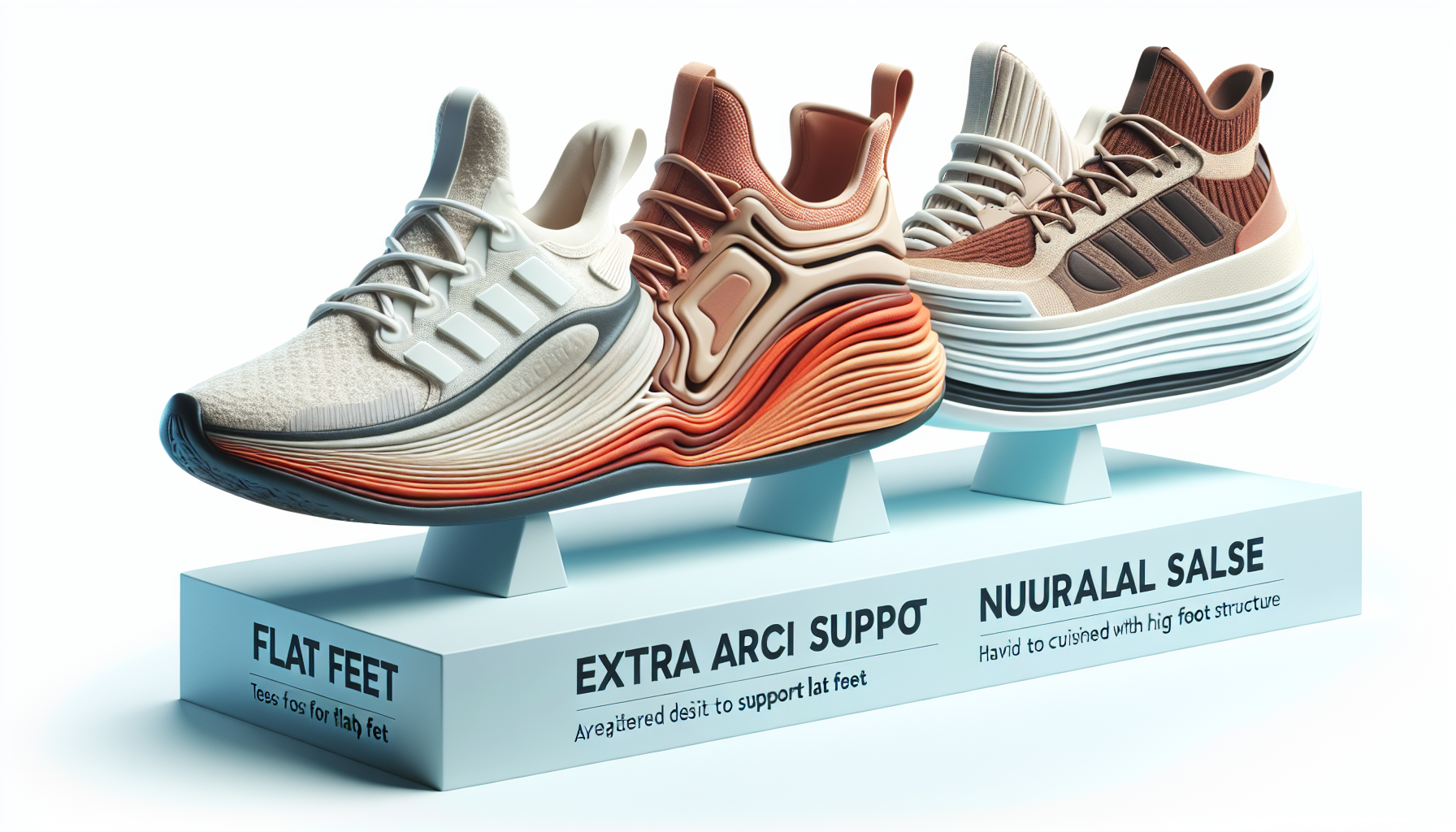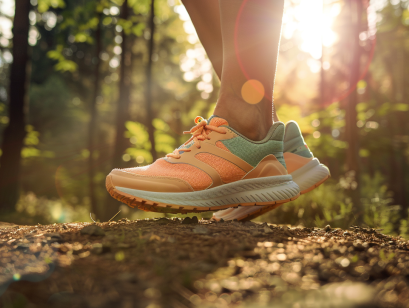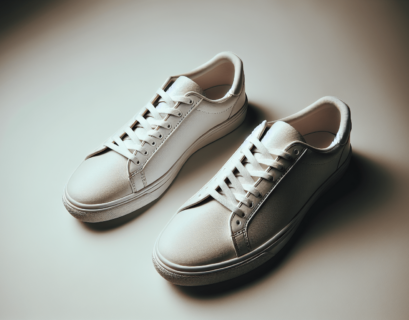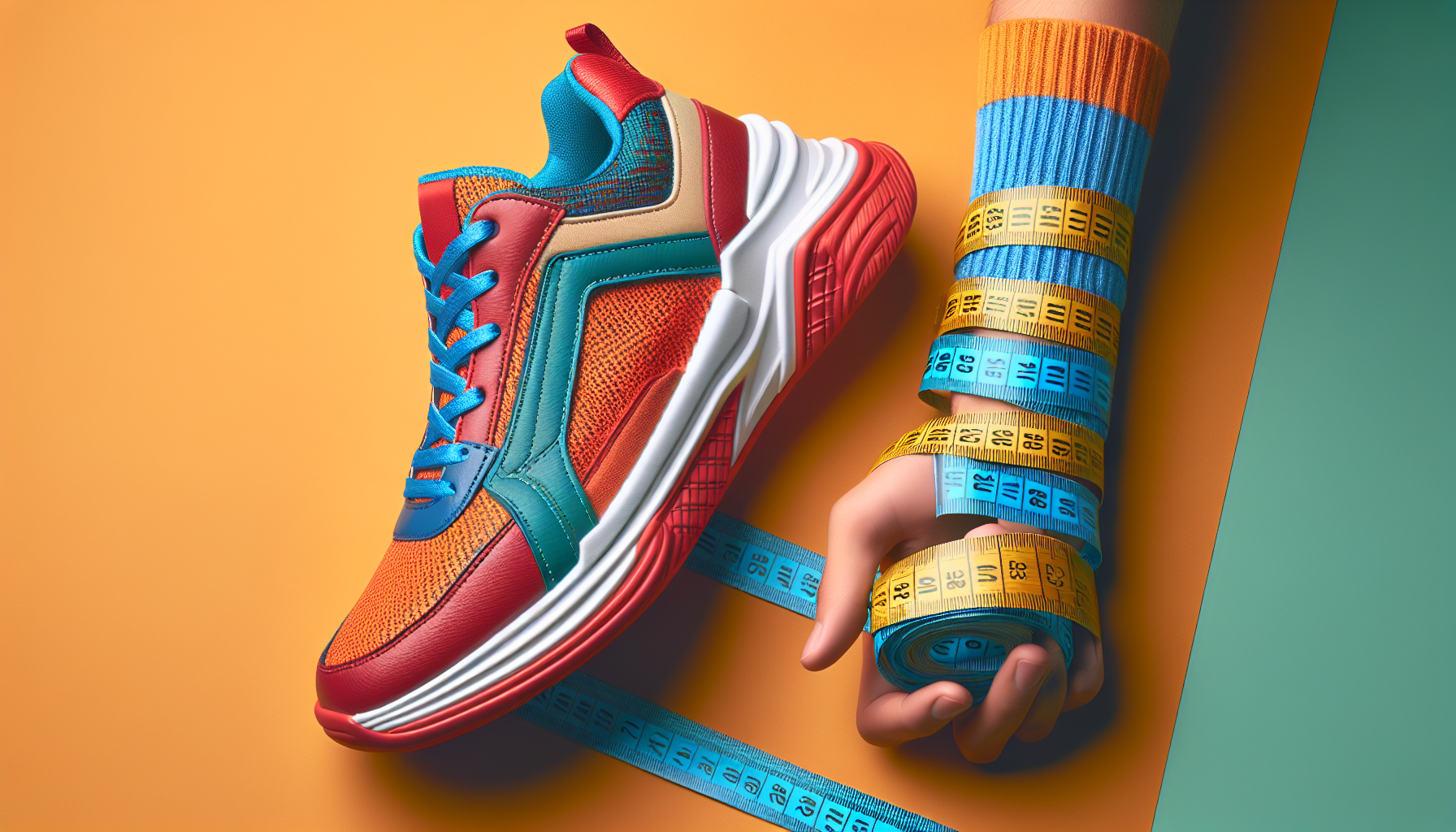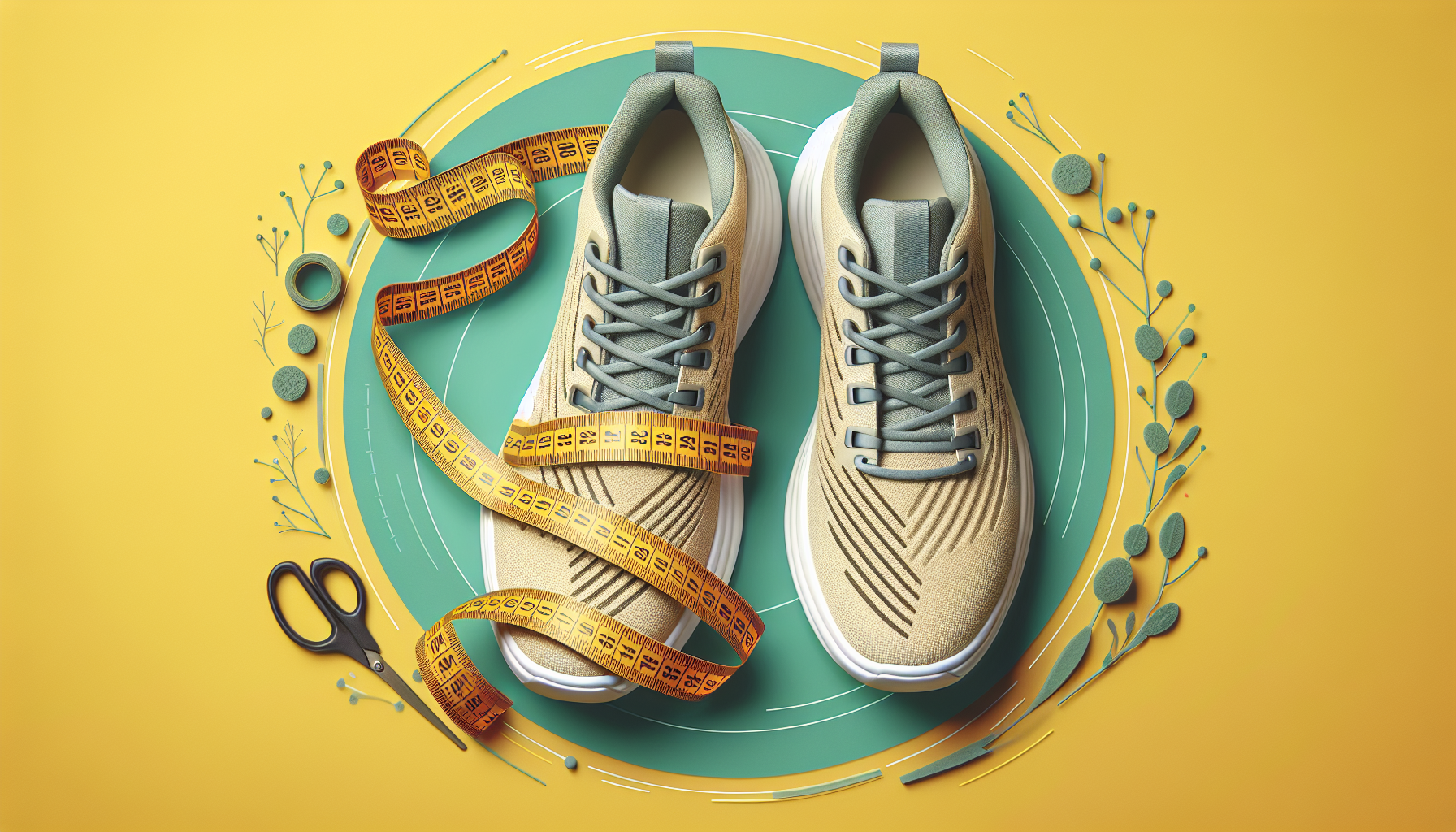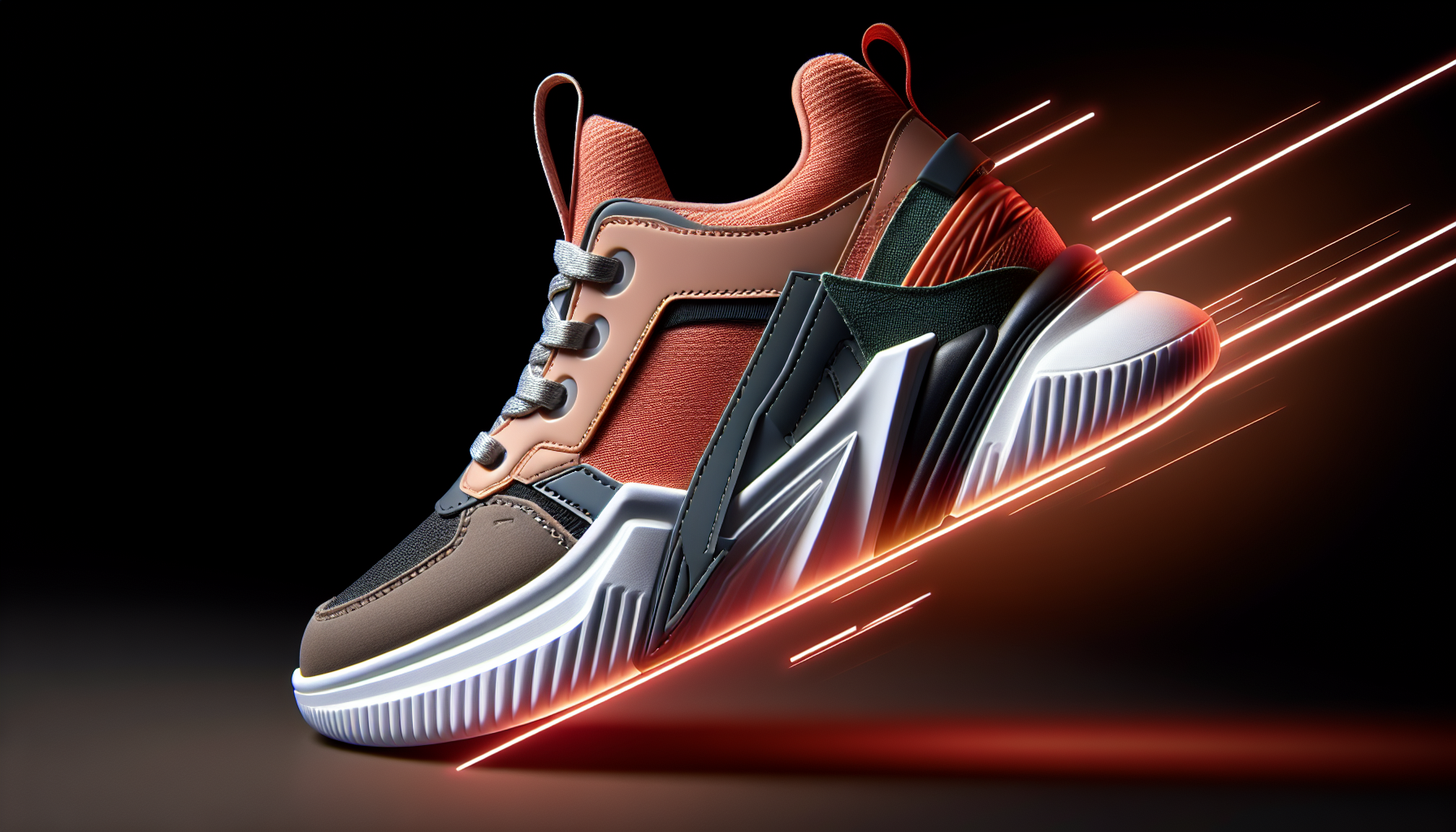Are you tired of wearing uncomfortable sneakers that leave your feet in pain? Look no further! In this article, we will guide you on how to choose the perfect pair of sneakers specifically tailored to your foot type. Whether you have high arches, flat feet, or something in between, we’ve got you covered. Say goodbye to blisters and sore toes, and say hello to a comfortable and supportive fit. So, let’s get started on finding the right sneakers for you!
Understanding Your Foot Type
Your foot type plays a significant role in determining the right sneakers for you. There are three main categories of foot types: flat feet, high arches, and neutral or normal arches. Identifying your foot type is crucial in finding the perfect pair of sneakers that provide the right support and comfort for your feet.
Identifying the Three Main Foot Types
To identify your foot type, you can perform a simple test known as the Wet Test. Start by wetting the sole of your foot and stepping onto a piece of paper. Examine the shape of your footprint to determine your foot type. If your footprint shows your entire foot, including the arch, you likely have flat feet. On the other hand, if your footprint shows only the heel and forefoot with a significant curve in the middle, you have high arches. If your footprint shows a moderate curve along the inside edge of your foot, you have neutral or normal arches.
Using the Wet Test to Determine Foot Type
The Wet Test is an easy and effective way to determine your foot type at home. By observing the shape and size of your wet footprint, you can gain valuable insights into your arch structure and make more informed decisions when choosing sneakers.
Consulting with a Podiatrist
While the Wet Test can provide a general idea of your foot type, it is always a good idea to consult with a podiatrist for a professional assessment. A podiatrist can thoroughly examine your feet, analyze your gait, and offer tailored recommendations based on your individual foot type and specific needs. They can also provide valuable insights into any underlying foot conditions or biomechanical issues that may affect your choice of sneakers.
The Importance of the Right Sneaker
Choosing the right sneakers for your foot type is essential for several reasons. Proper footwear not only provides support and stability but also helps prevent discomfort and injuries. Wearing the wrong sneakers can lead to foot pain, blisters, and even long-term issues such as plantar fasciitis or knee problems. By understanding the importance of the right sneakers, you can prioritize your foot health and overall well-being.
Why Proper Footwear Matters
Proper footwear is crucial for maintaining the natural alignment and function of your feet. It helps distribute your body weight evenly, reducing the strain on specific areas of your feet. Additionally, the right sneakers provide cushioning, shock absorption, and stability, which can minimize the impact of daily activities and reduce the risk of injuries.
The Role of Sneakers in Foot Health
Sneakers play a significant role in foot health as they offer the necessary support and protection for your feet. They help maintain proper alignment, provide shock absorption, and promote a natural walking or running gait. Sneakers designed for your specific foot type can address issues like overpronation or underpronation, which can contribute to various foot and ankle problems.
How Bad Footwear Can Affect Your Posture and Overall Health
Wearing ill-fitting or unsupportive footwear can have detrimental effects on your posture and overall health. Improperly aligned feet can lead to imbalances in your body’s joints and muscles, causing pain and discomfort not only in your feet but also in your ankles, knees, hips, and lower back. By wearing the wrong sneakers, you not only risk foot-related issues but also compromise your overall well-being.
Sneakers for Flat Feet
If you have flat feet, it means that your arches are relatively low or non-existent. Sneakers designed for flat feet are crucial in providing the necessary support and stability for this foot type. Look for sneakers with motion control features and strong arch support to prevent overpronation and promote proper alignment.
Sneakers for High Arches
High arches require sneakers with ample cushioning and flexibility. Look for sneakers that offer excellent shock absorption to compensate for the lack of natural cushioning in your feet. Additionally, consider sneakers with a curved or semi-curved last to encourage a more neutral foot strike pattern and reduce the risk of excessive pressure on specific areas of your feet.
Sneakers for Neutral or Normal Arches
Individuals with neutral or normal arches have a moderate curve along the inside edge of their feet. This foot type benefits from sneakers that provide a balance of support, cushioning, and flexibility. Look for sneakers with a slightly curved last and a combination of stability features and cushioning to promote proper foot alignment and comfort.
Understanding Sneaker Anatomy
To make an informed decision when selecting sneakers, it’s essential to understand the different parts of a sneaker and their roles. The three primary areas to consider are the insole, outsole, and upper material.
The Role of the Insole
The insole, or footbed, is the interior part of the sneaker that provides cushioning and support for your feet. It should offer sufficient arch support, proper alignment, and shock absorption. Depending on your foot type and any specific foot conditions, you may opt for sneakers with removable insoles to accommodate custom orthotics or inserts.
What to Look for in an Outsole
The outsole is the bottom part of the sneaker that comes into contact with the ground. It should provide traction and stability to prevent slips and falls. Look for sneakers with durable and flexible outsoles that offer sufficient grip and allow for natural foot movement.
The Importance of the Right Shoe Upper Material
The upper material of the sneaker is responsible for enclosing and protecting your feet. It should provide a balance of breathability, support, and flexibility. Consider factors such as the material’s durability, ventilation, and ability to accommodate your foot shape and size.
Features to Look for in Sneakers
When choosing sneakers, there are specific features you should consider to ensure optimal comfort and support.
Importance of Cushioning in Sneakers
Cushioning is crucial in sneakers as it helps absorb impact and reduce the strain on your feet and joints. Look for sneakers with adequate cushioning, especially in the heel and forefoot areas. The level of cushioning required may vary depending on your foot type and the activities you engage in.
Role of Flexibility in Sneaker Selection
Flexibility in sneakers allows for natural foot movement and proper gait mechanics. Look for sneakers that bend and flex at the ball of the foot, promoting a smooth and efficient stride. Too little flexibility can hinder your foot’s natural range of motion, while excessive flexibility may compromise stability.
Stability Features in Sneakers
Stability features in sneakers are particularly important for individuals with pronation issues or those who engage in activities that require lateral movements. Look for sneakers with features such as reinforced heel counters, wide bases, and additional midfoot support to enhance stability and prevent excessive foot rolling.
Trying On Sneakers
Trying on sneakers before making a purchase is essential to ensure the right fit and comfort.
The Right Time to Try on Sneakers
It is best to try on sneakers at the end of the day when your feet are slightly swollen from daily activities. This ensures a more accurate fit, as your feet tend to be slightly larger than in the morning.
The Thumb Test
When trying on sneakers, use the thumb test to check for adequate space in the toe box. Press your thumb down on the end of the shoe, ensuring there is about a thumb’s width of space between your longest toe and the front of the shoe.
Checking for Proper Heel and Toe Space
Ensure that there is no slippage or tightness in the heel area, as this can cause discomfort and blisters. Additionally, check for sufficient wiggle room for your toes to prevent constriction and promote natural toe splay during movement.
When to Replace Your Sneakers
Knowing when to replace your sneakers is essential to maintain optimal foot health and performance.
Signs Your Sneakers are Worn Out
There are several signs that indicate your sneakers are worn out and in need of replacement. These include visible wear and tear, flattened cushioning, decreased support, and an increase in discomfort or pain during physical activities.
The Typical Lifespan of a Sneaker
The lifespan of sneakers varies depending on factors such as the frequency of use, intensity of activities, and individual foot mechanics. On average, sneakers should be replaced every 300-500 miles or every 6-12 months if used regularly.
How Activity Levels Impact Sneaker Lifespan
If you engage in high-impact activities like running or intense sports, your sneakers may wear out more quickly. Similarly, individuals with higher body weights may experience faster deterioration of their sneakers. Adjusting the lifespan of your sneakers based on your activity levels is crucial to ensure you are always wearing footwear that provides adequate support and protection.
Running and Athletic Sneakers
Choosing the right sneakers for running and athletic activities is paramount for performance and injury prevention.
Choosing Sneakers for Running
When selecting running sneakers, consider factors such as cushioning, stability, and flexibility. Depending on your foot type and gait pattern, you may opt for neutral, stability, or motion control shoes. Visit a specialty running store for a gait analysis and expert advice on selecting the most suitable sneakers for your running needs.
Differentiating Between Different Athletic Sneakers
Athletic sneakers vary depending on the specific sport or activity they are designed for. Whether you engage in basketball, tennis, or hiking, it’s important to choose sneakers that provide the necessary features and support for your chosen activity. Consult with experts or do thorough research to select the most appropriate athletic sneakers for your needs.
Specific Sneaker Characteristics for Athletics
In addition to general considerations such as cushioning and support, athletic sneakers often have specific features tailored to the demands of the sport. These may include lateral support for quick direction changes, high ankle support for ankle protection in basketball, or waterproofing for hiking in wet conditions. Assess the unique requirements of your chosen activity and select sneakers that address those needs.
Everyday Sneakers
Finding the right sneakers for everyday wear requires a balance between comfort and aesthetics.
Shopping for Everyday Wear Sneakers
When shopping for everyday sneakers, prioritize comfort and functionality. Consider factors such as arch support, cushioning, and breathability. Additionally, ensure that the sneakers suit your lifestyle and fashion preferences, as you’ll likely be wearing them for extended periods.
Does Style Impact Shoe Choice?
While style is an important aspect of everyday sneakers, it should not be the sole driving factor. It is possible to find sneakers that combine both style and functionality. Opt for brands that offer a wide range of designs without compromising on comfort and support.
Balancing Comfort and Aesthetics in Everyday Sneakers
The ideal everyday sneakers strike a balance between comfort and aesthetics. Look for sneakers that meet your specific foot type and comfort requirements, while also aligning with your personal style. Remember, comfortable feet are happy feet, and choosing wisely will ensure you can enjoy both comfort and fashion in your daily activities.
Considering Orthopedic Sneakers
Orthopedic sneakers can provide additional support and therapeutic benefits for individuals with specific foot conditions or mobility issues.
The Benefits of Orthopedic Sneakers
Orthopedic sneakers are specifically designed to address various foot conditions, such as bunions, plantar fasciitis, or arthritis. They offer superior support, cushioning, and stability, which can alleviate pain and discomfort associated with these conditions and promote proper foot alignment.
Who Should Consider Orthopedic Sneakers
Individuals with existing foot conditions, mobility issues, or those who require additional support and comfort may benefit from orthopedic sneakers. If you have chronic foot pain, difficulty walking, or other specific foot needs, consulting with a podiatrist or orthopedic specialist can help determine if orthopedic sneakers are suitable for you.
Finding the Right Orthopedic Sneaker for Your Needs
When selecting orthopedic sneakers, it is crucial to consider both the specific foot condition you are addressing and your individual foot type. Look for sneakers that offer the appropriate features, such as extra cushioning, arch support, and adjustable closures. Consulting with a podiatrist or orthopedic specialist can provide valuable insights and recommendations to help you find the right orthopedic sneaker for your needs.
By understanding your foot type and the significance of choosing the right sneakers, you can prioritize your foot health and overall well-being. Whether you have flat feet, high arches, or neutral arches, there are sneakers designed to provide the necessary support, cushioning, and stability. With a wide range of features and options available, you can find sneakers that suit your individual needs, preferences, and lifestyle. Remember to consult with a podiatrist or orthopedic specialist for professional guidance, and don’t hesitate to try on different sneakers and assess their fit and comfort before making a final decision. Your feet will thank you for choosing the right sneakers that promote optimal foot health and enable you to enjoy your daily activities with comfort and confidence.

